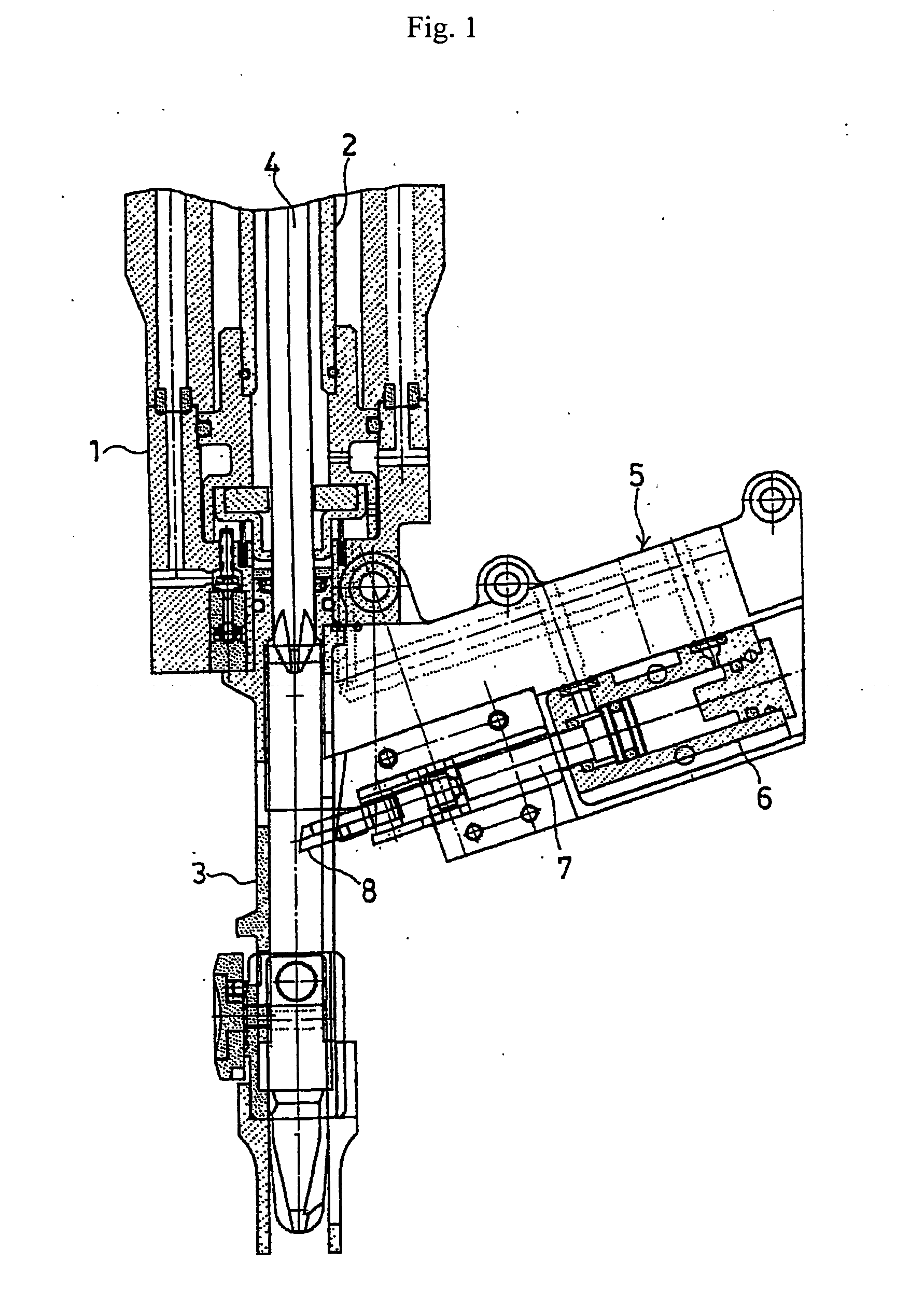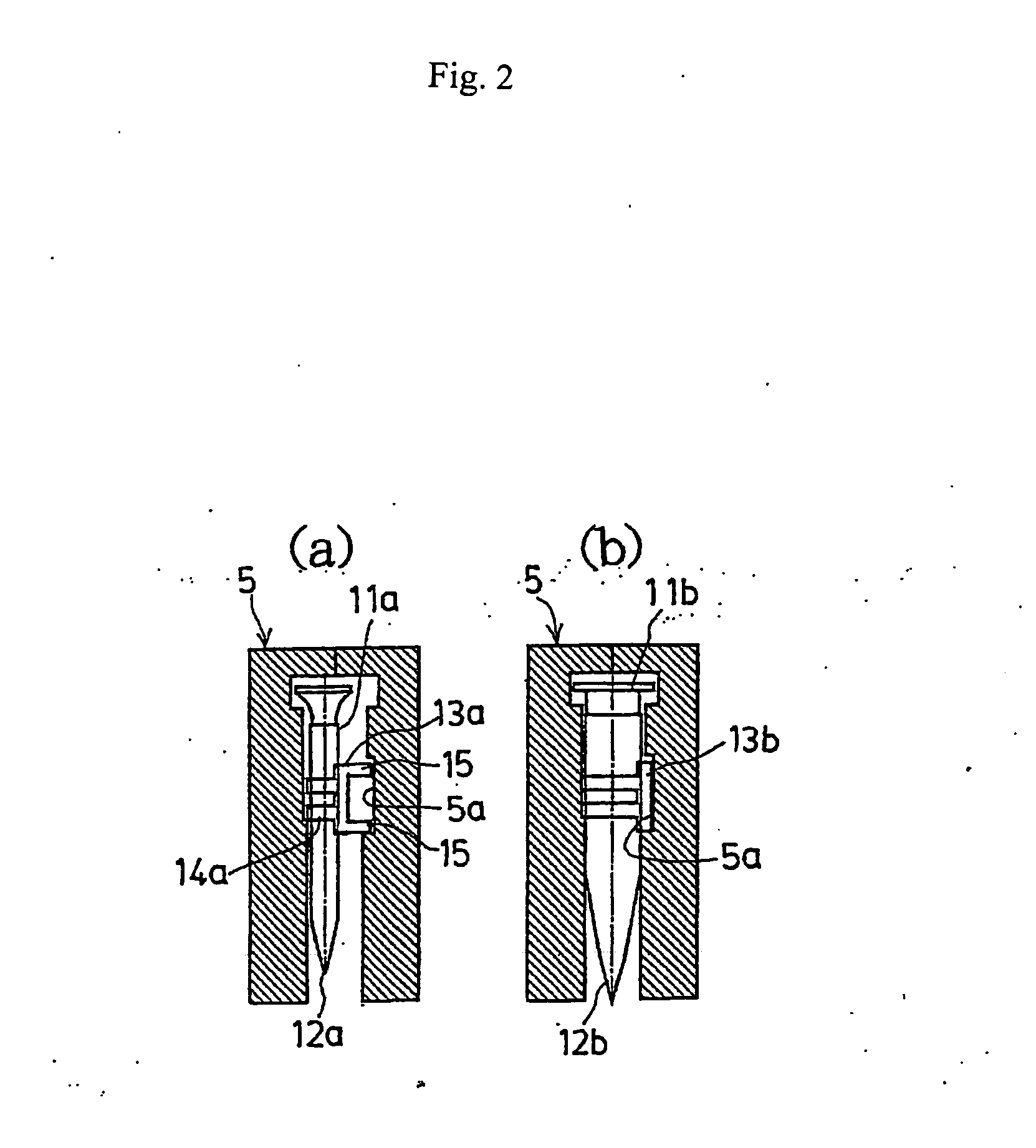Connecting fastener
a fastener and connector technology, applied in the direction of threaded fasteners, screws, applications, etc., can solve the problems of narrow size range of usable fasteners and differing heights for supporting fasteners
- Summary
- Abstract
- Description
- Claims
- Application Information
AI Technical Summary
Benefits of technology
Problems solved by technology
Method used
Image
Examples
second embodiment
[0029] FIGS. 4 to 6 show the In stead of the configuration for constantly controlling the horizontal width of the connecting fastener by increasing or reducing the thickness of the connecting band, the thickness of the connecting band is provided constantly and the connecting fastener is pressed and supported by a pressing plate 22 provided in a fastener magazine 21. FIGS. 4(a), (b) show the fastener magazine 21, wherein the pressing plate 22 of a spring pressurizing type faces a feed pawl 23 in the fastener passage. The fastener passage has a wide width such that a thick fastener can be loaded as well, and the pressing plate 22 presses the connecting band of the connecting fastener so as to thrust the same against the wall surface on the feed pawl 23 side.
[0030] Connecting fasteners 31a, 31b shown in FIGS. 5(a), (b) have an angle-shaped cross sectional shape provided with a rib 33 projecting from the upper end part of the connecting bands 32a, 32b toward the direction of the press...
third embodiment
[0032] Next, a third embodiment will be explained with reference to FIGS. 7 to 10. FIG. 7(a) is a right side view of the connecting fastener, FIG. 7(b) is a cross sectional view taken along the line A-A′ in the above-mentioned right side view, FIG. 7(c) is a cross sectional view taken along the line B-B′, and FIG. 7(d) is a cross sectional view taken along the line C-C′.
[0033] The numeral 51 shows a connecting fastener according to this embodiment, with a plurality of screws 52 used as the fasteners bound by a connecting band 53. Like the above-mentioned embodiment, the connecting fastener is to be used for an fastener machine of an impact driver type. A screw 52 is substantially the same as that of the above-mentioned embodiment. The screw 52 comprises a head part 54 having a cross-shaped concavity part (not shown) on the upper end surface to be engaged with the driver bit, and a shank 55 having a screw thread formed on the outer circumference. Moreover, in the shank 55, a screw th...
fourth embodiment
[0052] Next, a fourth embodiment according to the connecting fastener will be explained with reference to FIG. 11(a).
[0053] Although the principal structure is same as the above-mentioned embodiments, the connecting band 70 used in this embodiment differs from the above-mentioned examples in the following points. That is, in the rib 71 of the connecting band 70, there is provided a concavity part 73 corresponding to the supporting portions of the screw 72. Thereby, the rib 71 can easily be deformed so that the passage of the head part of the screw 72 is facilitated, and thus the screwing operation of the screw 72 is not prevented.
PUM
 Login to View More
Login to View More Abstract
Description
Claims
Application Information
 Login to View More
Login to View More - R&D
- Intellectual Property
- Life Sciences
- Materials
- Tech Scout
- Unparalleled Data Quality
- Higher Quality Content
- 60% Fewer Hallucinations
Browse by: Latest US Patents, China's latest patents, Technical Efficacy Thesaurus, Application Domain, Technology Topic, Popular Technical Reports.
© 2025 PatSnap. All rights reserved.Legal|Privacy policy|Modern Slavery Act Transparency Statement|Sitemap|About US| Contact US: help@patsnap.com



